Time Compression Trading: Exploiting Multiple Time Frames in Zero Sum Markets
$49.90
| Author(s) | |
|---|---|
| Product Type |
Ebook |
| Format |
|
| Skill Level |
Intermediate to Advanced |
| Pages |
212 |
| Publication Year |
2010 |
| Delivery |
Instant Download |
In Time Compression Trading, Jason Alan Jankovsky explores one of the least understood yet most powerful market phenomena — the moment when time and price converge to produce explosive opportunities. Jankovsky, drawing on years of experience in futures and currency markets, explains how professional traders recognize and exploit these “time compression” events, where energy stored in the market’s structure is suddenly released through sharp directional moves.
Rather than relying on lagging indicators or arbitrary setups, Jankovsky teaches traders to interpret how order flow, crowd psychology, and trader positioning build up potential energy over time. When that energy is released, it creates the kind of fast, high-probability moves that professionals live for. The book blends market theory, trader psychology, and real-world examples to reveal how to identify these moments and trade them with precision and control.
At its core, this work is about awareness — understanding how markets organize themselves and how timing interacts with price. It bridges the analytical and psychological sides of trading, teaching readers how to think, act, and execute like a professional in moments of opportunity and risk.
✅ What You’ll Learn:
- How to recognize and define “time compression” conditions in any market
- Why volatility and energy accumulation often precede trend acceleration
- How market participants’ psychology contributes to sudden price movement
- Tactical approaches to positioning before, during, and after compression events
- How to balance probability and timing for optimal risk-to-reward trades
- Mental frameworks for staying objective during high-speed market conditions
- How to integrate these concepts into an overall trading plan or system
💡 Key Benefits:
- Learn to anticipate and exploit explosive market movements with clarity
- Understand the hidden relationship between time, volatility, and emotion
- Build the patience and focus needed to act only when probability aligns
- Develop professional-grade timing and situational awareness
- Strengthen your trading discipline during fast, high-impact setups
👤 Who This Book Is For:
Time Compression Trading is designed for active traders and advanced students of market behavior who want to sharpen their timing and execution. It’s especially valuable for futures, forex, and index traders who operate in volatile environments and seek a strategic, professional approach to capturing large moves.
📚 Table of Contents:
- Basics of Zero-Sum Markets
- Who Is the Market?
- The Four Components of Market Structure
- The Illusion of Technical Analysis
- The Psychology of Initiating and Liquidating a Position
- The Development of the Theory
- Time Compression and Technical Analysis
- Forced Liquidation and Order Flow
- How Leverage Increases the Potential for Forced Liquidation
- How Traders Lose Perspective
- Basics of Multiple Time Frames
- Three Market Potentials: Uptrend, Downtrend, and Range
- The 12 Choices in Executing Trades
- Thinking in Probabilities
- Using Multiple Time Frames
- Topping Market
- Bottoming Market
- Secure Uptrend and Downtrend
- Secure Range
Time Compression Trading By Jason Alan Jankovsky
23 reviews for Time Compression Trading: Exploiting Multiple Time Frames in Zero Sum Markets
Clear filtersOnly logged in customers who have purchased this product may leave a review.

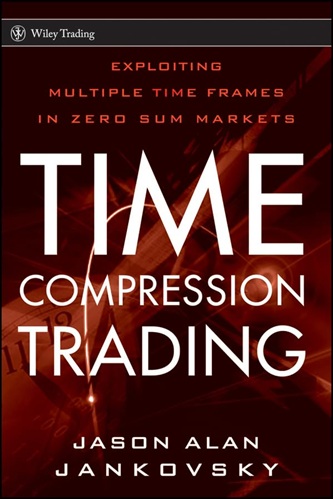

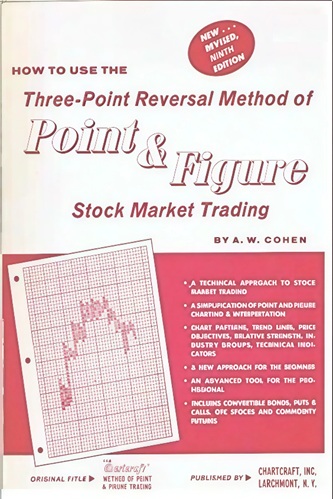
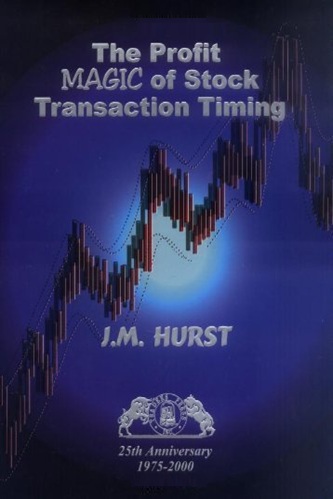
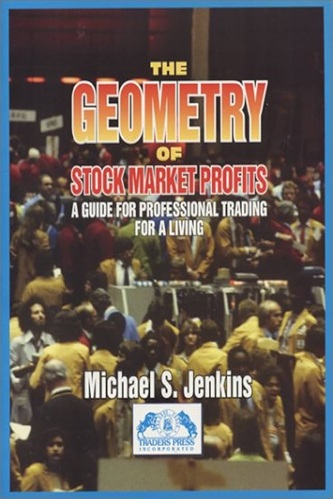
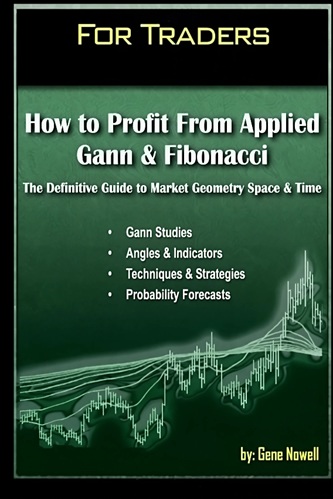

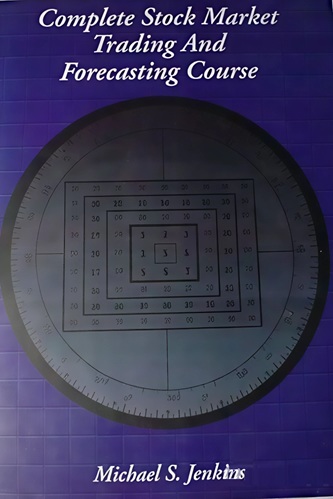
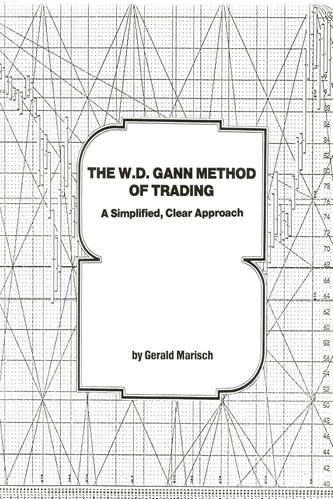
Murphy Cain (verified owner) –
Real eye opener. Find the loser and beat him up. Not for beginners.
Charley McBride (verified owner) –
Not worth the value . Typical same trading book with no additional information
Sage York (verified owner) –
this book completely changed my understanding about trading and made me a winning trader. it is a MUST read for any serious trader.
Kendra Garner (verified owner) –
It is very helpful. Been studying forex and have attended the authors webinars. He has very good points and is very knowledgeable
Deacon Patel (verified owner) –
If you want to see what’s behind the curtain of the charts you stare at read this book. Its obvious that doing and thinking the way everybody else does gets you what everybody else has. This book shows you how to think differently and explains clearly what’s really behind price and will set you miles ahead of the crowd. Expect to be challenged in everything you have been taught about the markets. More often than not you know the truth when you hear it. This book explains it and if your honest, you will know it.
Kai Sims (verified owner) –
Don’t buy this book under any circumstance. I bought it thinking I would recieve some brilliant epiphany about how and where to to buy and sell stocks, or at least some good information. He’s very vague about his ideas, which themselves are vague. It’s almost like listening to someone talk not because they have something to say, but because they like to hear themselves talk. Then treat you like a moron because you have no idea what the hell was just said. He will never give you one piece of specific buy/sell information. Nothing like watch for storng buying after a gap down during a down trend. Nothing but, only use technical analysis to see how the loosers are trading and trade in the opposite direction. Really? are you serious. So how do we know who the loosers are? This book doesn’t even qualify as hot air…To be fair, most books on trading are garbage. You have to find the tools that help you personally see what price is doing, and that’s just not gonna be the same for everyone. I use the 13/65/260 EMA’s on a daily and 60 min chart. thats it.
Natalia Johns (verified owner) –
If you trade futures or options and are losing. Read this book. It reveals the mechanics of zero sum and you better understand this or trade bubble gum cards. I cannot believe this book is allowed to be printed as IT WILL give you an edge. Thank you John and your generous contribution to all the losers. And all that have read this book at least once we now know who all the losers are. There is no holy grail in trading because all trading is still done by humans no matter what all the black boxes and holy algorithms tell you. By a bot, Striker trading has over 350 GREAT programs. Execution.
Madeline Byrd (verified owner) –
Buy the book if you have spent years trading, tried multiple systems, attempted to predict the future of prices by some indicator or set of indicators or have searched for the holy grail of trading and are exhausted. This book contains important points regarding zero sum markets and the thought processes of winners and losers in this type of market (futures and forex).
Don’t buy the book if you believe there is a holy grail system out there. You will be upset by the end of the book and write a terrible, emotional review.
Joziah Yates (verified owner) –
How useful this book is depends on who you relate to in the book. Unfortunately I was quickly identified as the loser by the book. I have literally spent thousands on trading books, dvds, courses, and advanced software. I have little to show for it. I have studied everything from advanced fibonacci techniques to standard techniques like RSI and Stochastics. This is the first book or course that I have that emphasizes that underlying the entire market is human behavior creating the order flow. Once you start thinking from this point, it is not surprising that all the indicators and studies have such instability. Also Jason’s emphasis on multiple time frames and ranges has really been eye opening for me. I only trade stocks and a few options. The book clearly points out that stocks do not fall under a zero sum market. However, all you have to look at is some event like the flash crash on May 6, 2010 to see that stocks do fall under time compression. I wish that I could have had this book years ago as thinking about order flow has really helped my perspective.
Hector Carr (verified owner) –
Like most people who want to improve their trading, I’ve read many books on the subject but have found very few that add anything new and useful. Let me be very clear– “Time Compression Trading” is both new and useful. You won’t find any secret system or indicator to give you market beating entry points in this book. If you still think you’ll find such a thing by reading a book on trading, then you might as well find another book on technical analysis to buy because there have to be losers in the market to pay the winning traders anyway.
On the other hand, if you want to understand the reality of how zero sum markets are structured, read this book. Then read it again slowly and try to really think through the points Jason makes very concisely. Then open your trading platform and try to visualize what the winners and losers are thinking as Jason explains. If you do that and really think it through, you will probably be hit over the head with the reality of how the market is structured at some point. But it requires a new paradigm of thinking which is very foreign to what the vast majority of trading educators teach. If you can make the mental leap, your trading approach will never be the same. It’s not easy but then, neither is pulling money from the markets.
Aylin Schmitt (verified owner) –
I read this book very quickly while I was on a 14-hr flight several months ago, so this review may not do justice to Jason’s work. Jason has written a pretty imp book on how multiple timeframes interact with each other. However, he did not reveal specific methods that he uses during the time compression when the move is about to happen(whether its order flow or unfolding of strength in higher timeframe resistance/support zones, etc, etc). He does show a few examples which are pretty straightforward. But, its the concepts from this book that traders need to use and implement in the methodologies they use.
For traders who have not been exposed to the usage of multiple timeframes, it is a very important concept to understand and implement. Good work Jason!
Enzo Rowe (verified owner) –
Warning number one: This book is not intented for equity traders. Warning number two: This book is published by Wiley, a company who’s trading books are more like sales brochures for the author’s trading system, website, newsletter, previous books etc. etc. Warning number three: this author is a crypto-libertarian, who interjects some bizarre rants attempting to explain the markets. Judging by the comments he’s got his fans, I however, am not one of them and will be retuning my book tomorrow.
Maybe it was wrong for me to characterize the following paragraph from the intro to part three as a crypto-libertarian rant, perhaps nonsensical gobbledegook would have been a better choice of words.
“The”longest” point of view is usually the one that will benefit the most people involved in a particular conflict. For example, in government, there are people who want to help the “disadvantaged.” They work to get laws passed and get taxpayer-funded programs in place to ease the suffereing for these individuals. But people who have spent their entire lives dealing with the “disadvantaged” will tell you that a large portion of those people have a bigger problem, such as mental illness or just plain laziness. The more informed people with greater expierence will work to have potential new laws or programs reflect the deeper reality that they see. For the greater good of society, these more informed people see a better way to get the results that everyone is seeking. When these people make that effort, they find themselves in conflict with those who don’t see the deeper reality.”
Rowan Wagner (verified owner) –
This is a great trading book but it is not for beginners. You will have to trade for many years to understand and use this book. When I began reading Jason’s books, I got the feeling he was talking diredtly to me. I have been trading many years longer than Jason but I have come to the same conclusions about the markets that he talks about in his books.
Everything that needs to be said about the market has been said between seventy five and one hundred years ago. Wyckoff, Livermore, and Gann all said the same thing. Markets fluctuate. That’s all they do. They start out in accumulation and proceed to markup from there they go into distribution and then mark down. There is nothing more to it than that. Everyone wants to complicate it or figure it out rather than make money from it. Me, I prefer the money.
All you have to do is decide to go long or short. Take your position and see what happens. If you start losing money you are wrong. Get out with a small loss. If you start making money let the trade go as far as it will go.
Most of you think you can trade without losing money. You can’t because it can’t be done. I lose at least three out of every ten trades and sometimes I lose five times. It doesn’t matter because when I win I let my winners run as long as they will go. The winning trades cover the losses amd all my trading expenses. I make a nice living.
Most people can’t do it because they fear the market. They fear the loss of money. There is an old saying that scared money never wins. I never think about money when I trade. I spend all my time and effort trying to stay focused on doing the right things. They are. Finding a place to buy or sell, Money management and risk control, and mental discipline. Of the three, mental discipline is the most important and the hardest to learn.
Jason can teach you all of this but you have to be able to hear what he is saying. Most people are mostly wrong about most everything. I don’t know why this is so I just know that it is. Trading is a wonderful business if you make money at it. It is not difficult to do. It just takes money, courage, and a cool head. Jason Alan Jankovsky describes the successful trader better than most. Isn’t it awful that the world is not the way we would like it to be? The market is bigger than you and me. It is now wise for us to try to impose our beliefs on it. The market doesn’t know you from Adam and it doesn’t owe you a dime. Listen to Jason! Happy trading.
Javier Guevara (verified owner) –
Alan Jankovsky is an acquired taste. But I didn’t buy the book for his bed side manner. Time Compression is not intuitive and kudos for him for even attempting to present this complex material. To state his compression concept is about trading higher timeframes is a gross simplification. Time Compression is a process not a cookbook. It took me several years to fully grasp this concept. But I had to integrate his framework into my personal philosophy. But I took what I needed and discarded what I didn’t and it has dramatically changed by trading results. Technical analysis is viable but only in confirmation/confidence building. Orderflow analysis over a subset of the time continuum is where time compression bears fruit.
Denver Cervantes (verified owner) –
To make a comparison: if Jankovsky’s previous book “The Art of The Trade” is Ayn Rand’s “The Fountainhead,” then this new installment would be like a philosophical explanation of Objectivism. I think most people would have a hard time fully understanding this book, or its uses, unless they read “The Art of The Trade.” Not only that, they may find this new book relatively worthless or boring if they do not share similar experiences as explained in the previous one. So on that note, I believe “Time Compression,” and “The Art of The Trade” should be read together to get a full understanding of what Jason is trying to get across here.
As for the actual book, he does a fairly good job explaining something that is on the feeling level for him. Here are some pros and cons about the book.
Pros:
*I find how technical this book is to be a big plus. His previous work hinted and pointed in the right direction, and then left it to you to try and figure out the essence of what he was attempting to explain. This book goes a bit deeper into Jason’s actual process, and does it well enough that you can use it as a reference.
*He doesn’t really explain anything new that you haven’t heard before, but he places emphasis in different ways which expands the mind. A bit like when you hear “cut losses quickly” when first starting out, and then hear it again after holding a loser that is trending against you. Same words, much different impact.
*One of the most valuable parts of the novel are the few paragraphs at the end of each chapter where Jason uses an example to expound on a point. I found those little endings very insightful, and I wish he had used more of them.
*As a day trading prop trader for the last year, and a swing trader for three years before that, I can say that a lot of what he talks about with the higher and lower time frames plays out. I have personally never read any other books that put into words so well the interplay of different time frames. Most books give clues like “time frame confirmation” and “trading only when time frames line up,” but they aren’t as pragmatic. This book will really be useful for any trader on any time frame.
Cons:
*You might find the end of the book a bit tougher to get through then the beginning and middle; it became more technical. I found it a useful part of the book, but he probably could have organized the material so the message was clearer. There are large paragraphs that basically said “If this happens, it might mean this, but if that happens, it might mean this, and if this happens, it might mean this.” I don’t think the content was bad, just the presentation. It was tough for me to keep clear of all the different distinctions without reading slowly. Maybe something in bullet form would have been better, who knows, maybe I am just slow!
All in all, its a pretty great book. It might not blow your head off on a feeling level like “The Art of The Trade,” but it sure was a very needed sequel to explain the intricacies of his story. 4.5 stars.
Matilda Pacheco (verified owner) –
I am very disappointed at this book. Not only have I wasted money on it, but time as well. This book has no new substance whatsoever. It does not provide any new helpful hints or strategies other than the basics every simple trader already knows.
I kept reading and reading, then after a hundred pages I started skimming just to reach something. What is the author suggesting to do to be more profitable at trades? And finally, there it comes. The “Theory of Time Compression”. Guess what it is. It is basically this: don’t trade utilizing short-term periods (5 minutes), trade utilizing long-term periods (days or weeks). Why? Because when you trade short term your TA signals deceive you and you won’t see the big picture. That’s it folks! That is the only message of the book!
I am shocked that such a book received 9 five stars out of the 10 that reviewed the book. I am even more shocked by the editorial review: “Reveals how to profit from the actions of market participants operating in different time frames”. Really, who wrote this editorial review?
I am very disappointed.
LATER ADDITION:
After posting my comments, I received a response from the author that developed into arguments then took an ugly turn, because of the character of the author, who kept attacking and reducling me. I noticed he did the same with other purchasers who did not like this book. He kept writing in bad language and ill manners, accusing us of being “morons”, “stupid”, and “losers”. His writing also demonstrated an abnormal personality, and he was always writing in exploding capital letters like an inexperienced kid with apparent frustration. If you trust an author who talks like that to his audience, then go ahead and buy the book. But believe me, you would be buying a book, with no substance at all. Save your money, and do a good research. There are plenty of trading books out there by respectable authors that you can benefit from. This book is a scam, don’t buy it.
Please check his responses to me and those who gave him a bad rating, then make up your mind.
I also noticed something really suspicious. I decided to look at the reviewers who praised the book. Six of the nine that rated this book as 5 stars have never rated anything else on Amazon. Have they not read any other books on trading? Only two of those nine posted their real names. In addition, none of the nine explained in any way or detail how they were able to utilize the concepts in this book to make them better traders. I even had a response from a “potential” reader who was praising and defending the author and his ideas before he read any of his books!
Therefore here is my question to all those reviewers that gave this book 5 stars: Can you detail the process by which you became a better trader after reading this book? Help me and help potential readers who are deciding whether or not to buy the book for practical help. We all know there is no holy grail, but how exactly did this book help you to be a winner against the other losers?
Finally, I went to the author’s website and found out that he advertises and sells a mechanical system that generates buy and sell signals clearly based on Technical Analysis (You can see a program similar to MetaStock with charts and buy and sell signals), while in this book he attacks Technical Analysis in a whole chapter titled “The Illusion of technical Analysis”. So which is it Jankovsky?
Readers: Please beware. If you really want to read books that offer value and practical applications, I suggest the followings. These books have many top reviews, not only nine. And you won’t find their authors cursing readers who gave their books low rating, and calling them names:
– “Long-Term Secrets of Short-Term Trading”, by Larry Williams
– “Way of The Turtles”, by Curtis Faith
– “Cybernetic Analysis for Stocks and Futures”, by John F. Ehlers
– “High Probability Trading”, by Marcel Link
Good luck everyone. Trust me, you can make money in the market. Just read for giants, not suspicious authors.
Milan Anderson (verified owner) –
This should be a classic some day (as we evolve more to this type of thinking). There is a wealth of order flow understanding in this book. Though the concept of time compression itself is not particularly difficult—you might need some ‘time’ to absorb the information. It’s place in markets is fairly clearly defined by the author. I’ve read it 4 times and will read it again in a few months. It has become the basic premise of my trading. I have been studying ‘bubbles’ recently and perhaps we can start to define minor bubbles that are time-compressed (very useful for shorter-term trading. Traders enter time-compression on every time frame). So, give this a read. You might go through a paradigm shift to get full use out of it, but for me it ranks it the top 5 trading books in my library of over 300!
Cristian Wood (verified owner) –
Esam strongly suggested that I write my own review and shut the heck up, which I thought was pretty good advice, so here goes.
The problem with trading is it seems really simple. Unfortunately, it’s not simple, it’s as complex and nuanced as the human brain, because complex human emotions drive it. How many arguments have you had with your wife when you thought you were arguing about one thing and she thought you were arguing about another? Have you ever won any of those arguments? It’s the same with the markets, but worse, because the markets are counterintuitive, the concepts are interrelated, and what works and what is “true” is highly dependent upon context. You can’t win an argument with the markets. Everyone enters trading with a mental picture of what the markets are and what their role as a trader is, and without exception, that picture isn’t clear and is usually the cause of losses. Rather than confront these illusions, we try to use a bigger hammer and develop more expertise in technical analysis. However, the winners never seem to use a bigger hammer. Some people figure reality out. Some people never figure it out, because this isn’t a sport where you learn by doing, it’s an endeavor where you learn by thinking. Unfortunately, introspection and unlearning what you think you know goes against our nature. I think this is the theme of the book. It’s devoted to piercing some of the common misconceptions that plague traders because Jason writes over and over again, the markets don’t care about your reality.
Some have criticized the book as too simple, however, if millions of traders are losing because of the simple things, then there’s obviously a need for a book that discusses those things. I congratulate the critics if they knew everything in this book, but would caution them that they may have missed some of the points, because there’s a lot there hidden below the surface. The author is not a professional writer, he’s a trader, so don’t expect Nathaniel Hawthorne, you have to dig out the lessons, and get ready for a lot of repetition. That’s the problem with trading, you can’t separate the topics, and have to either repeat yourself or qualify all your statements. For example, you can’t discuss position size without discussing stops, risk, volatility, and liquidity. Everything is tied together and it takes years to get a realistic picture of the game as a whole.
One thing I had forgotten that the book reminded me of was humility. We spend so much time developing “expertise” that we forget to be humble. The market doesn’t care about me or what I think. The market doesn’t care what the fundamentals say or what’s on my chart. The adage “Everything I need to know is in the chart” is baloney. What chart are we talking about? The 15 minute chart doesn’t care about my 5 minute chart. The 30 minute chart doesn’t care about my 10 minute chart. What’s going to happen next might be depicted on a chart ten timeframes away or on no chart, because there are traders out there big enough to move markets. Most traders don’t do more than glance at the adjacent time frames and then look for patterns in the clouds. Your primate brain is a pattern recognition system, it will find those patterns. It works the same way for fundamental traders, they will MAKE an argument that seems right to them rather than admit the unknown, because primates hate unknowns and would rather invent Gods to explain the weather. Unfortunately, the losers invariably have the best arguments in trading, because good arguments take away your humility and make you vulnerable. This book gives us the right answer; stop over analyzing like everyone else, because they all lose. Analysis cannot be optimized. This book reminded me to be humble.
It’s hard to believe, but most trades actually think they are trading a five minute chart against other five minute traders. In reality, everybody’s motivations and actions, on every time frame, go through the same sausage grinder and what comes out is known as “the price.” No matter how small you slice that sausage, it’s still the price. The closer you look, the more you blind yourself to the whole and miss what can happen next. Bigger, better capitalized traders up the time frames don’t care about what’s on your chart. They can lumber into your time frame, completely unaware of you, and step on your sausage. Charts can’t warn you of that until some of the damage is already done. I think a lot of trading books do a disservice to traders in not emphasizing that the easy money exists on higher time frames, but then again, that doesn’t sell books, indicators do. So there’s an honesty to this book you won’t get from most other books.
I don’t think Jason is saying TA is useless. I think he is saying it is only a tool, and you have to find the loser and the situations where the tool can perform its function. The lower the time frame, the more noise is in the chart. The higher the time frame, you not only have less noise, you have bigger and better capitalized traders who can resist manipulation of the price. Put yourself in the titan’s place, would you rather make a million dollars trying to stamped other well capitalized titans who know the game, or would you go to lower time frames where the prey are prone to cut and run? Everybody goes after the low hanging fruit, us. In a world with low commissions, great liquidity, and zero transparency, trading in time frames that are resistant to manipulation cannot be emphasized enough. Most trading books ignore this and set their adherents on a path of failure. But this book says it, the lower your time frame, the harder it is to trade.
Jason outlined his viewpoint that range and time compression make for great trends. No surprise there, but he works his way into the process and explains why in an original way, emphasizing entry points, order flow, and psychology. Throughout the book, he emphasizes that a trader has to think like the person he wishes to take money from, another point that cannot be emphasized enough. He stresses traders have a valid reason for taking the other side of your trade, and are using similar methods for trade selection, so you need something else to give you an advantage. That something else is knowing where the order flow is in balance, and knowing when it goes out of balance, so that somebody is going to lose and lose big. It doesn’t tell us who is going to lose, but it does tell us there will be a big enough move to make a profit and enough pressure to iron out some of the whipsawing that we usually see in the markets. This brings us to the issue of confirmation.
The cancer of confirmation is the most ignored subject in trading. Confirmation is good in long term position trading, but devastating in short term trading. Winning traders say it over and over again, you have to take the signal. Jason is the first author I have stumbled across stress how widespread the problem is in trading, our natural thirst for confirmation is what destroys most short term traders. Price doesn’t move in one direction, it retraces, and if you wait for confirmation, you won’t have enough profit in the trade to weather the retracement.
There are a lot of books out there that purport to teach us how to trade. Unfortunately, the subject, even in general, is far too large to shoehorn into one book. To make matters worse, most trading books feel the need to cover everything, and waste space on ancillary topics like hardware. In fact, most spend almost half of the book on indicators, a topic which can’t even be covered properly in one book. Technical analysis is the final thing a new trader needs to learn, not the first. TA can’t win the battle for you. Sometimes the chart provides clarity, and the fog of war created by having price action from all time frames ground together is lifted. At other times it doesn’t, and your chart is just noise. Where there is clarity you don’t need clever indicators, the clarity resides in the chart. Where there is noise, clever indicators cannot help you because they can’t make something out of nothing, they can only mislead you. You don’t lose because you use the wrong indicators. Plenty of people win using the exact same indicators you are using, so the problem has to be something else. That’s what this book is about, addressing whey most people lose.
Finally, I would like to address the criticism that the book isn’t all that original and doesn’t have a lot of citations, and that the author must therefore be a serial borrower of other people’s ideas. I can assure you Mr. Jankovsky didn’t invent trading, but then again, neither did those authors with all the citations. What works in trading has been around for a long time. What doesn’t work in trading will be around even longer, because we primates never change. When you write a book about what does and doesn’t work, who do you cite? Nobody invented this stuff. The origins of what works and what doesn’t comes from the experiences of the millions of labs rats that tossed themselves into the sausage grinder. Jason doesn’t offer us anything new. It’s not something new that prevents us from winning. It isn’t a secret how to win, it is right before our eyes but we just won’t allow ourselves to see it. We’d rather immerse ourselves in technical analysis, quest for Holy Grails, and listen to charlatans with the title “Dr.” before their name who want to sell us a system, mysticism, or a secret. I didn’t see that in this book. The author isn’t a serial book writer, he’s a trader. I don’t even want a secret. I don’t want something clever or original, all I want is money. That’s what this book is about. If you choose not to listen, you have a lot of company. If you already know all of this, you are wise, and that’s the thing. The markets don’t reward the smart and the clever. They punish geniuses, the stupid, and the lazy alike. The markets only reward wisdom, and that’s what this book is about.
Finally, I don’t know the author, and I haven’t used his services. What I have done is read hundreds of books on trading. I’ve read and listened to even more interviews of traders, thousands of hours of podcasts, and most especially, I think about trading all day long. I’ll share a little secret with you. The human mind is real good at evaluating what we see, but lousy about noticing what’s not there. In all of this research I’ve seen almost no correlation in how the winning traders win. However, there’s a great deal of correlation in how they avoid losing. That’s the only secret in trading. There’s a thousand ways to win and you only need to know one way. On the other hand, there’s a thousand ways to lose and you need to be familiar with each and every one. So when you pick up one of those rare books that are devoted to not losing, don’t be upset if you don’t learn a new set up. That’s not how you are going to get where you need to be in this journey.
This book earns five stars. Out of hundreds of books, it earns a place on the top shelf of my trader’s library where I keep all the books on how not to lose. There’s a lot more in there than I covered, and probably some things that I missed, but I don’t want to spoil the fun.
Erik McCall (verified owner) –
This is the first book I’ve read that approaches the market from both a practitioner’s POV (i.e. non-academic) and an order flow mindset. I very much enjoyed the first two sections, where he talked about the losers in a zero sum game, the fallacy of technical analysis, and more. I already viewed the markets from this perspective, but it was nice to hear someone else talk about my favourite subject, and he also expounded on a few areas I hadn’t given much thought to, so overall it was an excellent read.
The other/last two sections, on the other hand, were sort of based on some premises which I didn’t agree with. For example, that the lower timeframe trader is the loser and the higher timeframe trader the winner. Also that the lower timeframe trader trades using the same concepts as the higher timeframe traders, such as trends. Now I suppose it is entirely likely that the majority of losers on lower timeframes are in fact using technical analysis and entering at the wrong places. However they would not automatically become winning traders using the same analysis on the higher timeframes. Jason does indeed mention this, that they not only need to move to the more “dominant” (higher) timeframe, but also change their approach. Why then does he use “incorrect” methods of analysis on the lower timeframe examples and “correct” analysis on the higher ones? You cannot compare the two like that. If the method is at fault, then the same method should be used on the lower and higher TFs to show that the method doesn’t work. If the use of lower TFs is at fault, and the method isn’t, then show that the method works on the higher TFs and not on the lower ones.
I know his point was that both the technical analysis method and the lower timeframes were incorrect, causing losses. But the point is ineffectually made by using a different method of analysis on the higher timeframe. He doesn’t show us what happens when using the “correct” method on the lower timeframe. If it worked, then why constantly point to lower timeframe traders as the losers, when it’s the method at fault? If it didn’t work, then for the sake of consistency and clarity, use the same method on both timeframes.
To conclude this lengthy point, it is my opinion that order flow on the lower timeframes is best viewed differently from typical longer-term analysis (i.e. trend trading). A lower timeframe shows in more detail exactly how the order flow is affecting the market in the short term, where imbalances are building, what the short term market is “thinking” or what its intentions are. This is best traded in a different way from the typical technical analysis Jankovsky uses on his lower timeframe examples.
However, I must also say that whilst this issue was a pet peeve of mine, the second two parts are overall quite good and will probably help most people (they’ve given me some stuff to think about as well). I’m not saying its conclusions are wrong at all, I just took exception to his blanket statement of “this is how lower timeframe traders trade, and lower timeframe traders are losers”.
All in all though, I heartily recommend this book to anyone wondering why their technical analysis isn’t working as the many books say it should, or anyone with an interest in order flow. I should also note that this isn’t about order flow as in “time and sales, L2, etc.”, this is about viewing the market from an order flow mindset. I will also recommend another two books to go along with this:
1. Trading and Exchanges by Larry Harris.
T&E is a dry but excellent book which will give you a solid factual grounding in how exactly markets work, how and why prices move, who trades and why, etc. In my opinion this is the most important book on the markets a retail trader can own, and if you are not familiar with its contents, you will likely have an understanding of the markets which is not based on reality but on fantasy which you picked up from other books, trading forums, the many charlatans in the education business, your own baseless, faulty logic. How can you expect to profit if your premises are flawed? I would recommend you read T&E before this or any other book. You’ll be amazed how much other information floating about you’ll be able to dismiss out of hand after reading this book, simply because you’ll be able to spot a system or premise that is not grounded in reality from a mile away.
2. The Art of the Trade
This isn’t a “must read”, but it helps understand where the author’s coming from, and also what precisely he means by “conflict” which is a work he uses often in this book. An easy, enjoyable read.
Annalise Maldonado (verified owner) –
As a professional of over 10 years trading experience in Futures, I broadly endorse the core message of this book.
I think i can articulate (where jankovsky doesn’t) to “noob”, that the reason that the indicator based technical analysis is invalid on the lower timeframes, but not on the higher timeframes, is that when correctly tested for, in the vast majority of(though i don’t say ALL)cases such indicator based signals have no demonstrable positive edge, no-matter how you combine them on lower timeframes, particularly intraday. Many profitable traders get buy with them on their screens, but i would suggest that their edge is usually down to a combination of other factors like good stock screening, standard cutloss/runwin techniques or an experienced eye for unusual or rapidly developing stand-out behaviour in some form of price action.
However, the chances of any given indicator having a positive edge DO demonstrably rise in the higher time frames, though typically only when employed in a trendfollowing manner. i.e. forget “Overbought and Oversold” rubbish.
Thus the only true measure of exhaustion that i have come across over the years that is worthwhile is that of sudden price spike followed by immediate volume drop in activity, and Jankovsky delves into and explains this nicely. I haven’t given much thought to fulltime use of this type of pattern until reading this book, as typically my style is to enter on continuations of a young trend and not to anticipate tops/bottoms.But like another reviewer says, any book that can open, or re-open your eyes to something that is actually useful, is worth it.
I would encourage people to purchase and read the book for the rest of it’s less tangible philosophy also. It is the true way one should be thinking of markets, “people, not prices” as jankovsky states. He might not be absolutely right on everything, and is a touch over-assertive on things for which he offers no thorough proof. But as with many “the-game-within-the-game” intuitive concepts, 100% irrefutable proof of these concepts is almost impossible. I think that his apparent conviction that volume is the last word in all analysis is somewhat flawed. IMHO prices can do many great movements with little or no volume whatsoever, as only perceptions need change, zero-sum markets or not, and it is still quite easy to misread some shadowy powerful market actors waiting in the wings, until they blindside you, no matter how good your “time compression” confluence looks. He is right though in the view that zero-sum markets do apply particular pain to those caught out, and this is where the confluence of volume and action blowout come together as he outlines nicely.
Brian Doyle (verified owner) –
Interesting concepts, however not to my style of trading. More of a scalper myself which relies on bursts of energy in the market with tiny stops rather than huge stops outside the volatility range. Still worth a read in my journey learning this game.
Karen Hail (verified owner) –
Not a bad book. I already exploit traders in different timeframes and look for congruence which gives rise to time compression and huge orderflow. This book is the first book to exclusively focus on time compression congruence, and so gets a decent rating for breaking new publishing ground. The book certainly helped me tweak some of my thinking.
Any book which gives me a single workable idea is worth it, in my view. This book gave me a couple.
Teresa Gibbs (verified owner) –
I’ve just finished reading Jason’s excellent book. Having traded my own account for the last two years and read multiple texts on the subject, this book has completely opened my eyes. With the emphasis on what’s happening with order flow and strategies to identify the loser (who ultimately pays the winner) in a zero sum market, this is must read text for anyone serious about trading.
I’ve contacted Jason through his website and had a personal response – he is extremely experienced, knowledgeable and approachable.
Great book, great content – very easy to read and massively insightful – don’t be put off by the price tag, it’s well worth it!